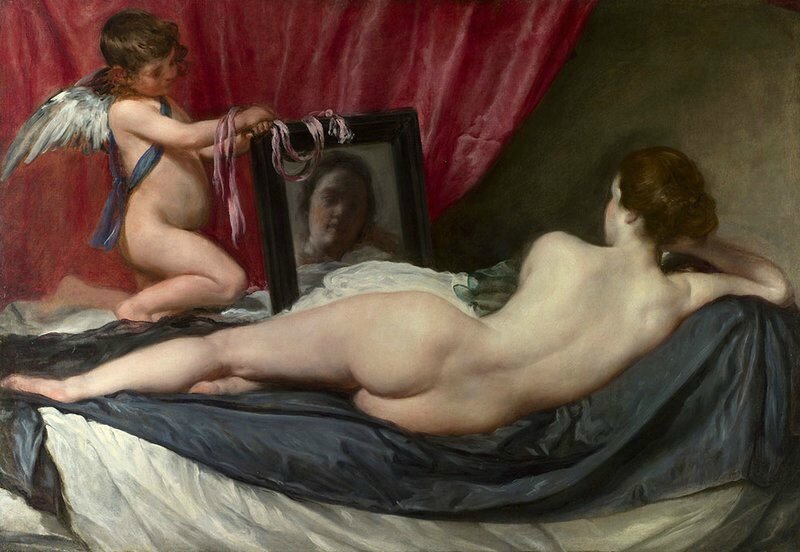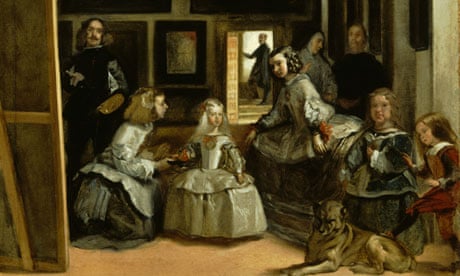An exhibition produced jointly by the Réunion des musées nationaux - Grand Palais and the Musée du Louvre, in collaboration with the Kunsthistorisches Museum, Vienna
(A first stage of the event, in a reduced format was presented in Vienna, the Kunsthistorisches Museum, from October 28, 2014 to February 15, 2015.)
Born in Seville in 1599, Velázquez is one of the most important figures in the history of art, all styles and periods together. The leader of the Spanish school, official artist to King Philip IV at a time when Spain dominated the world, he was a contemporary of van Dyck, Bernini and Zubaran, although his art gave him a timelessness that is rivalled only by Leonardo da Vinci, Raphael, Michelangelo, Titian, Caravaggio and Rembrandt.Trained at an early age by Francisco Pacheco, an influential painter and scholar in the Andalusian capital, he soon won recognition for his art.
Encouraged by his master, by then also his father-in-law, he decided to try his luck at court in Madrid. After a first unsuccessful attempt, he was finally appointed painter to the king in 1623, the start of his social ascension that led him to the highest offices in the palace and brought him very close to the sovereign.
His career was marked by two decisive trips to Italy, in about 1630 and then 1650, and by the birth and death of successive heirs to the throne. He was a masterly portraitist, renovating and liberating the genre, but was also skilled in landscape and history painting and, in his youth, genre scenes and still lifes.
Although he is still one of the world’s most famous and admired artists, no monographic exhibition in France has ever shown the public the genius of the man that Manet called the “the Painter of painters”.
The rarity of his paintings (scarcely more than a hundred) and their legitimate concentration in the Prado Museum (Madrid) make it particularly difficult to organise a full retrospective. However that is the challenge taken up by the Louvre and the Grand Palais who have joined forces with the Kunsthistorisches Museum in Vienna, with the generous support of the Prado.
Some outstanding loans have thus been obtained such as
Vulcan’s Forge (Prado)
and Joseph’s Bloody Coat Brought to Jacob(Escorial), along with abstract masterpieces such as
Venus at her Mirror (London, National Gallery) or the
Venus at her Mirror (London, National Gallery) or the
Portrait of Pope Innocent X (Rome, Galleria Doria Pamphilj) — so dear to Francis Bacon — two universal icons of art history.
The exhibition seeks to present a full panorama of the work of Diego Velázquez from his beginnings in Seville to his last years and the influence that his art had on his contemporaries. It also explores the main questions raised in recent years, showing newly discovered works – sometimes for the first time –
(The Education of the Virgin [New Haven, Yale Art Gallery];
Portrait of the Inquisitor Sebastian de Huerta [ private collection]).
(The Education of the Virgin [New Haven, Yale Art Gallery];
Portrait of the Inquisitor Sebastian de Huerta [ private collection]).
The first section evokes the art world in Andalusia at the beginning of the 17th century, putting Velázquez’s early works into perspective and recreating the atmosphere of emulation in Pacheco’s studio with paintings and sculptures by Alonso Cano and Juan Martinez Montañés.
It then explores the naturalistic and picaresque vein of Velázquez’s painting through kitchen and tavern scenes, with a special focus on the variations and embroidering on the same motifs. About 1620, the painter’s style developed more openly towards Caravaggism. This was when he first came in contact with Madrid and its paintings.
This part of the exhibition, covering the transition from his early training in Seville to the first Madrid period, presents the painter’s works among those of his contemporaries ,Spanish or Italian, who were all striving to be “modern”. When he first began to work at court his conception of the portrait developed from lively naturalism to a more distant, solemn style consistent with the portrait tradition in the Spanish court. His first journey to Italy, a decisive turning point in his art and his career, is illustrated by works which could have been done in Rome or immediately after his return
(View of the Gardens of the Villa Medici, Fight Outside an Inn...).
(View of the Gardens of the Villa Medici, Fight Outside an Inn...).
These masterpieces of his early adulthood are an opportunity to explore a little-known aspect of his work: landscapes. Following Rubens’s example, Velázquez brought an airy freshness to the backgrounds of portraits painted outdoors for the various royal houses. The central part of this second section focuses on Balthazar Carlos. As the cherished son and heir of the royal couple, he incarnated all the hopes of the Spanish Habsburgs at a time when Philip IV’s own reign was at its apogee.
Velasquez’s mythological, sacred and profane painting marks the halfway point in the exhibition with Venus at her Mirroras the highlight.
The third and last part is dedicated to the last decade of the painter’s life and his influence on his followers, know as the velazqueños. This section confirms the painter’s importance as a portraitist, first at the court of Madrid then in Rome around Pope Innocent X during his second trip to Italy. Two of his main assistants, who have stayed in the master’s shadow, are evoked here: the Italian artist, Pietro Martire Neri and a freed slave,
Juan de Pareja, who figures in a stunning portrait by Velázquez (New York, Metropolitan Museum)
Juan de Pareja, who figures in a stunning portrait by Velázquez (New York, Metropolitan Museum)
The exhibition ends with the last portraits by the Spanish master, compared with those of his son-in-law and most faithful disciple: Juan Bautista Martinez del Mazo. A room dedicated to the latter reveals the last flashes of Velázquez’s style with
The Painter’s Family from Vienna and a small version of
Las Meninas from Kingston Lacy, before the influence of other artists, Van Dyck in particular, began to be felt on the painters of the following generation, the most brilliant of whom, Carreño de Miranda, offers us the impressive final images of the last Spanish Habsburgs.
The Painter’s Family from Vienna and a small version of
Las Meninas from Kingston Lacy, before the influence of other artists, Van Dyck in particular, began to be felt on the painters of the following generation, the most brilliant of whom, Carreño de Miranda, offers us the impressive final images of the last Spanish Habsburgs.






.jpg)



.jpg)
